The Frenzy Over Can Chickens Fly
Can chickens fly?
Can Chickens Fly
Really, you’re going to ask me this…
Well, I better answer…
Can Chickens Fly The Real Truth
Can chickens fly hmmm.
Let’s have a look at some history to give you the low-down on our not-so-tame chickens.
Our backyard hens are the noble descendants of a wild breed of chook called the grey or red Jungle Fowl, they have also been connected to dinosaurs, but I am a bit sceptical about this.
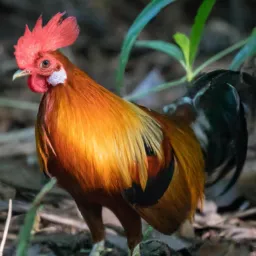
I am sure that they have some connection to some dinosaurs but the majority I cannot see it.
Anyway…
These birds are still found in the wild in countries such as:
- Laos
- Myanmar
- Thailand
- Laos
- Far East
In the wild, these jungle fowl not only perch in trees, but they also roost in trees.
They have to be very adept at flying in the air to escape predators around them in the wild.
In fact, I had the opportunity to see some in their wild state when I went over to Santoza island off Singapore when I lived there for a while.
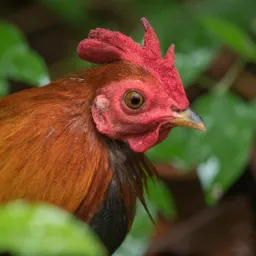
They are of lighter bodyweight and designed to fly in order to escape predators, so are still in their natural state.
The Domesticated Chicken
Can Domestic Chickens Fly Away?
When it comes to our domestic chickens, you will see that they mainly are a lot heavier than their wild cousins.
And if they have fluffy feathers, as many breeds have, then you could really say that they’re fairly dismal flyers, often going airborne for only a few yards before landing.
But they still can get airborne…
Domestic chickens are not good at flying because their wings are too small for their now bigger bodies and their flight muscles are too large and heavy, making it hard for them to take off.
This, you could say is a part of evolution that we as a people have encouraged due to their dependency on us looking after them and giving them the majority of their food.

Which Chickens Can Fly?
The ability of a chicken to fly is usually determined by their breed type.
For instance…
Heavy breeds of chickens such as Wyandottes or Orpington chickens can ‘fly’ about a foot off the ground for a very short distance.
But do come back down to earth again.
You see…
Their wings cannot give them the lifting power that they need for the size of their body.
You will have seen, I am sure…

That the heavier breeds of chickens can cover the ground much like a hovercraft if they are in a hurry to get somewhere and running is just not quick enough for them.
I guess you have seen the wobble from side to side as their wings start flapping madly in the rush to whatever they are really enthusiastic to get at.
This of course might be you with your chicken’s food in hand or also chasing down some small rodent or insect that is trying to fly away from them, or just a fast insect.
There are Mediterranean breeds such as the leghorns and the Ancona to name a few that are known as flighty birds.
Spitzhaubens are a chicken originally from Switzerland and also love to try their hand at flying.
Araucanas are chickens that like to go back to their flight origins and will sometimes go to roost up in the trees at night, just like their ancestors.
Their instinct is still there, but some chicken breeds cannot make it these days of their domestication, preferring the comfort of the man-made hen house and a perch or two…
See also Merry Christmas Chickens Garden Flag Review
There is also a chicken breed called the Red Rangers that have been known to be determined escape artists said by some people who own them in their flocks.
Can Bantams Fly
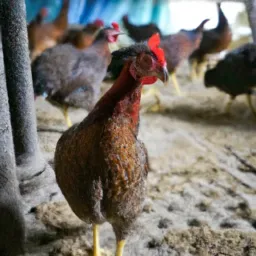
Now, if you have bantam chickens, meaning hens, roosters…
You will know they can actually fly very well, achieving a considerable height!
About 6 feet is estimated for some breeds.
If they are startled by a predator, yes…
They will attempt to fly up into a tree and roost there as long as is needed till the predator goes away and then stay there even longer, so look up if you have misplaced a chicken in your backyard.
And hope that they don’t decide when they fly down that it’s your side of the fence they land and not your neighbours, in fact, some bantam breeds can do an almost vertical takeoff!
Now that is a sight to be seen…
The beauty of bantams is that if you really want to keep them confined, and not look for them in tress if the neighbour’s dog got into your yard…
It is a high-enclosed run with plenty of perches and a nice chicken house will keep them very happy, and safe.
Breeds that are not as good as their bantam cousins in flying are Silkie chickens and Polish bantams.
Neither breed is known for their flying abilities – might be those fluffy feathers when it comes to the silkies for instance.
Silkies do not fly because their feathers simply do not allow them to do so.
A Silkie’s feathers are similar to that of a baby chick. In fact, their feathers do not stick together like standard-feathered chickens.
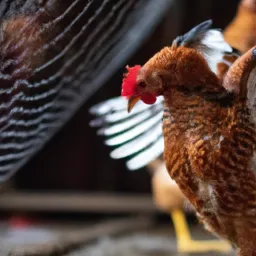
So that the air cannot get trapped under their wings to get pressure to get airborne…
So Why Do Chickens Fly
There are other reasons that your chicken might feel that flight is a good reason to get airborne.
Curiosity and Determination to name a few…
These two things are the ‘why’ of chicken flight that is not initiated by a predator.
We have all heard the saying ‘The grass is always greener on the other side’ – well that does not speak directly to the chicken, in fact, anything even us humans.
Hens, if you know it or not, are intensely curious creatures and do love to be nosey and love to investigate new things, and if there is food in the mix or pleasure related.
They are in…
I think that phrase is not justified to any animal, we probably came up with this because they don’t do things in the way that we do things.
And expect them to behave as we do.
Apart from what many people perceive, the chicken is not a dumb animal.
A limited sense of view on our part.
Unfortunately for your neighbours, with beautiful flower beds, and perhaps a veggie garden.
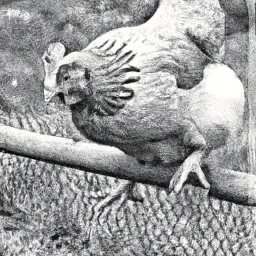
They might just get a visit from your chickens, as they will be curious enough to try and visit their yard for a ‘knees-up’ to have some fun driven by curiosity and what food they can scavenge!
If you have a four-foot fence between you and the neighbour, it should hold, did say SHOULD!
Your heavier breeds of chickens such as Barred Rocks and Australorps in.
But as I have said they can literally run up a fence with difficulty but sometimes successfully while flapping their wings to get up-lift to get to the other side if something is enticing enough.
See also Wyandotte Chicken 101: Everything You Need to Know
For the most part, you will probably see your chickens just pace back and forwards at the fence if there is something that has caught their eye.
If you have lighter breeds they are likely to find no difficulty in going over the top.
Can chickens fly given enough determination, a curious hen will fly over a YES!
Eight-foot fence with minimal effort.
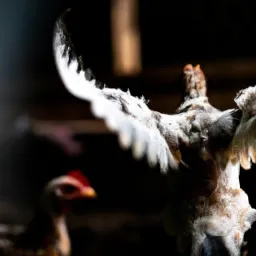
But this is not very common so… Can chickens Fly?
Most of the time you won’t have to worry but do keep in mind the confines you have your chickens in and the breed you buy.
The Ethics of Clipping Chicken Wings: Debunking Cruelty Concerns
Clipping chicken wings has long been a topic of debate among poultry enthusiasts and animal welfare advocates.
While some argue that it is a necessary safety measure, others view it as a cruel practice.
So let’s provide a balanced perspective on the matter, exploring the reasons behind wing clipping, the potential impact on the birds, and offering insights into alternative solutions.
Understanding Wing Clipping
Wing clipping is a process that involves trimming the primary flight feathers of chickens’ wings to limit their ability to fly long distances or gain altitude.
This is commonly done to prevent birds from escaping enclosures, potentially putting them at risk of predation or causing damage to neighbouring properties.
The Cruelty Debate
Critics of wing clipping argue that it is an unnecessary and cruel practice, as it limits the natural behaviour of chickens and restricts their freedom.

They believe that birds should be allowed to fly and express their natural instincts.
While it is true that chickens are capable of flight, they are primarily ground-dwelling birds and do not rely heavily on flying for survival.
Balancing Safety and Welfare
Proponents of wing clipping emphasize the importance of safety and welfare considerations.
By clipping their win
gs, chickens are protected from potential harm, such as getting lost, encountering predators, or causing damage to property.
It is crucial to note that wing clipping is a temporary measure and does not cause long-term harm to the birds.
Alternatives to Wing Clipping
For those who find wing clipping objectionable, there are alternative solutions worth exploring. Constructing secure enclosures with proper fencing and roofs can effectively prevent chickens from escaping without the need for wing clipping.
Also, providing ample space, enrichment, and proper supervision can minimize the desire for chickens to fly off.
The Importance of Proper Technique
When wing clipping is deemed necessary, it is essential to emphasize proper technique to minimize any potential harm to the birds.
This includes carefully trimming only the primary flight feathers and avoiding any damage to the wings or causing unnecessary pain or bleeding.
It is recommended to seek guidance from experienced poultry keepers or veterinarians to ensure the process is done correctly.
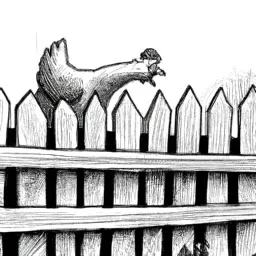
The debate surrounding wing clipping in chickens remains contentious, with valid arguments on both sides. While some view it as a necessary safety measure, others perceive it as a limitation on the birds’ freedom.
Ultimately, the decision to clip chicken wings should be based on individual circumstances, prioritizing the safety and welfare of the flock.
As with any husbandry practice, it is crucial to approach wing clipping with careful consideration, proper technique, and a commitment to the overall well-being of the birds.
